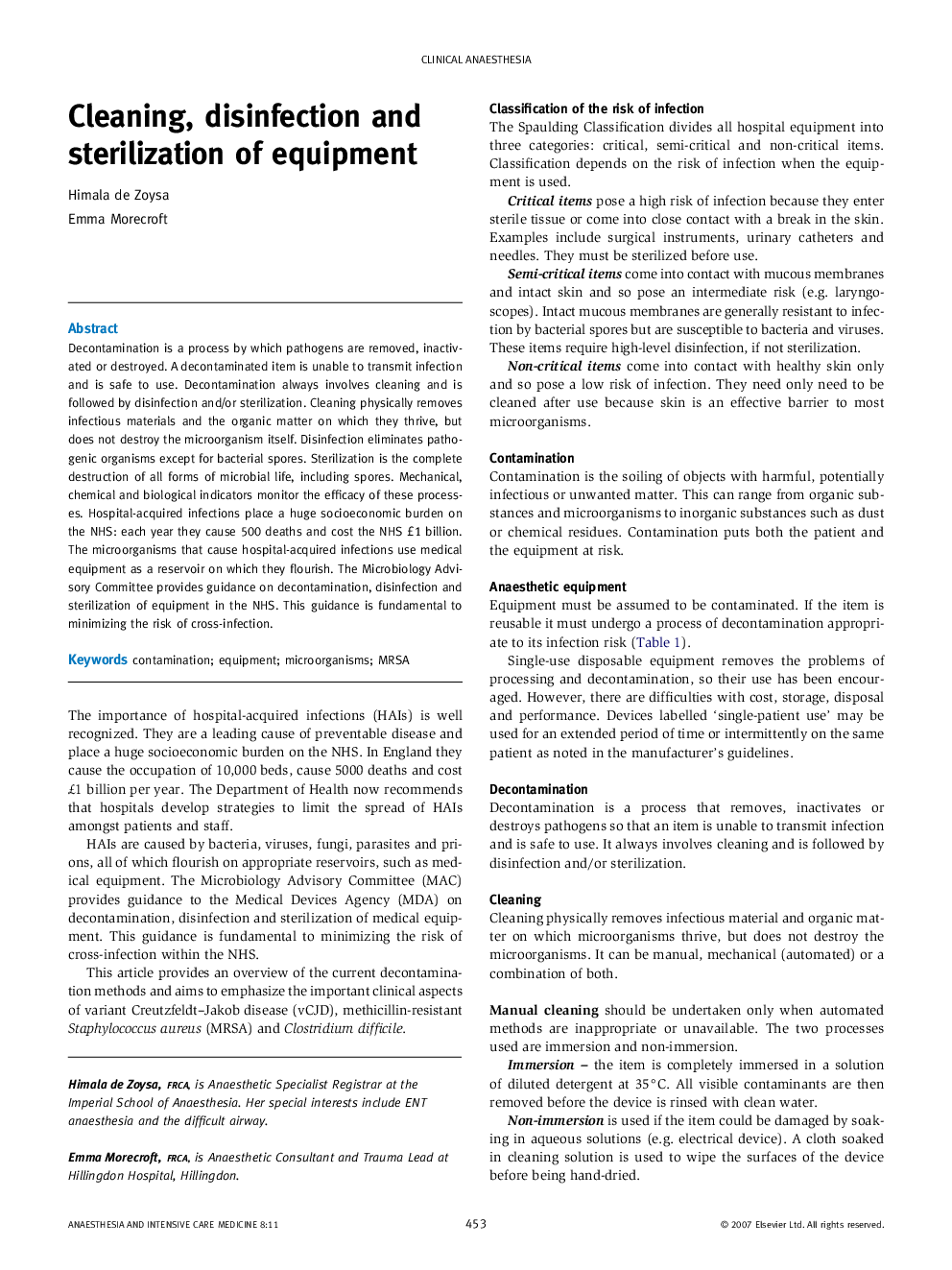| Article ID | Journal | Published Year | Pages | File Type |
|---|---|---|---|---|
| 2743620 | Anaesthesia & Intensive Care Medicine | 2007 | 4 Pages |
Decontamination is a process by which pathogens are removed, inactivated or destroyed. A decontaminated item is unable to transmit infection and is safe to use. Decontamination always involves cleaning and is followed by disinfection and/or sterilization. Cleaning physically removes infectious materials and the organic matter on which they thrive, but does not destroy the microorganism itself. Disinfection eliminates pathogenic organisms except for bacterial spores. Sterilization is the complete destruction of all forms of microbial life, including spores. Mechanical, chemical and biological indicators monitor the efficacy of these processes. Hospital-acquired infections place a huge socioeconomic burden on the NHS: each year they cause 500 deaths and cost the NHS £1 billion. The microorganisms that cause hospital-acquired infections use medical equipment as a reservoir on which they flourish. The Microbiology Advisory Committee provides guidance on decontamination, disinfection and sterilization of equipment in the NHS. This guidance is fundamental to minimizing the risk of cross-infection.
